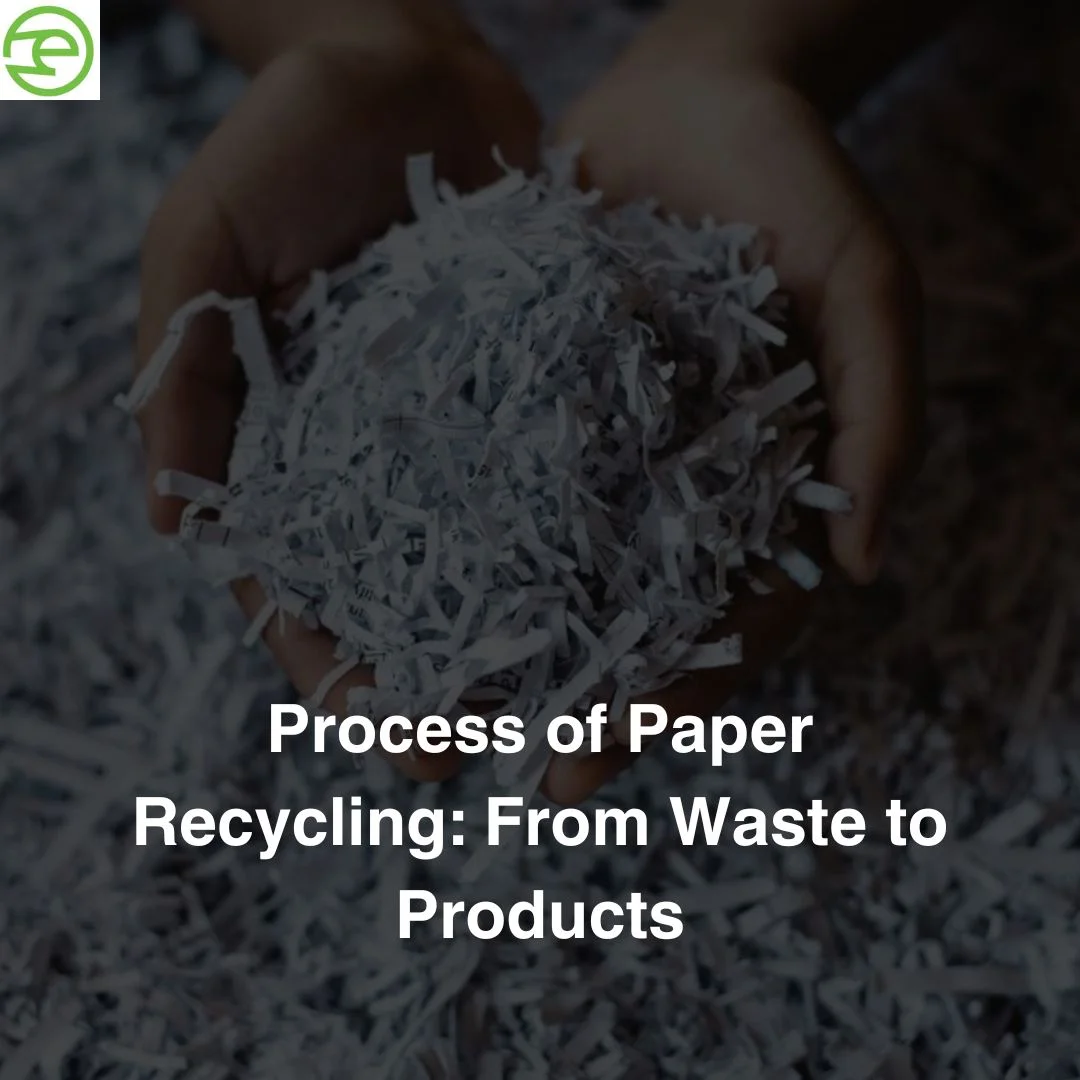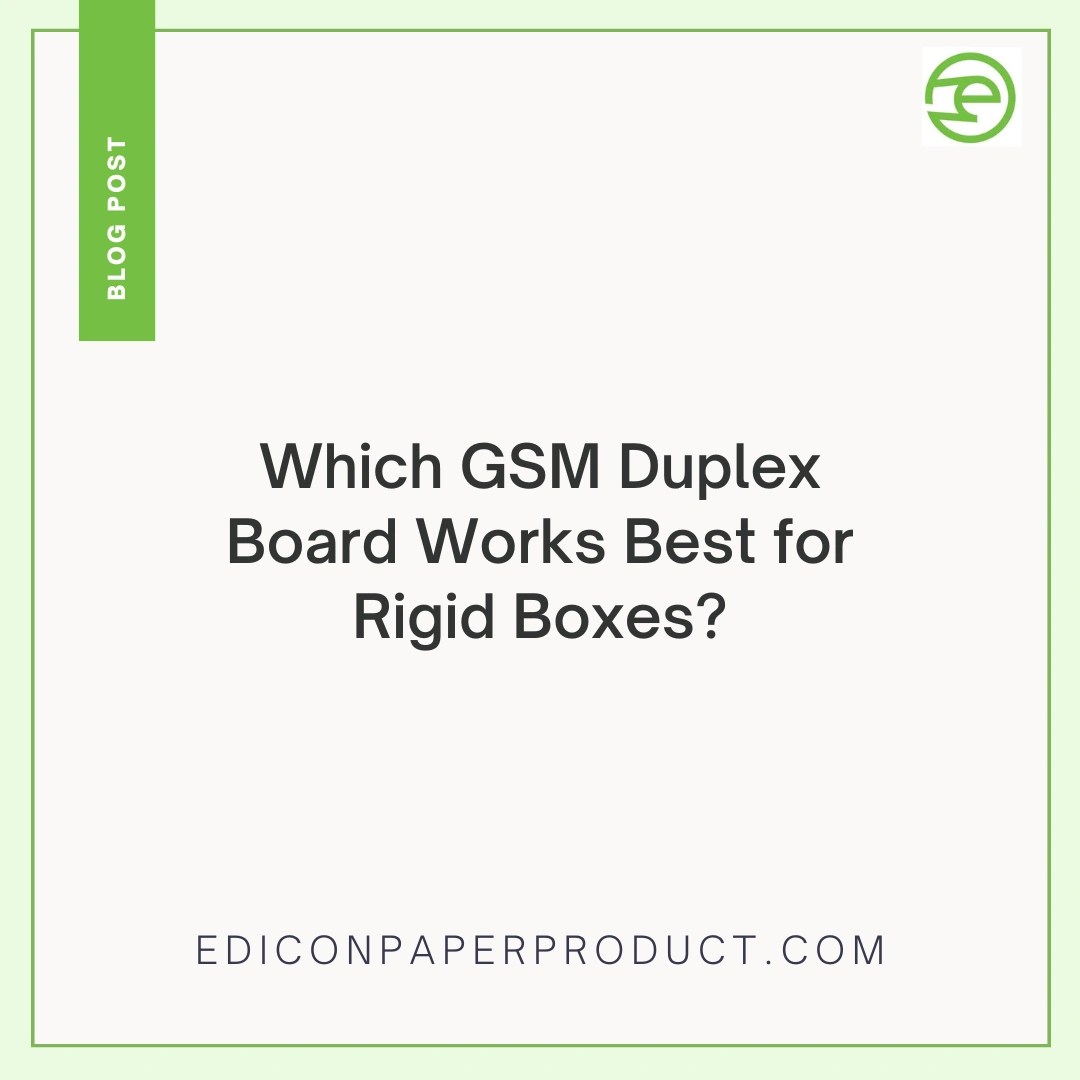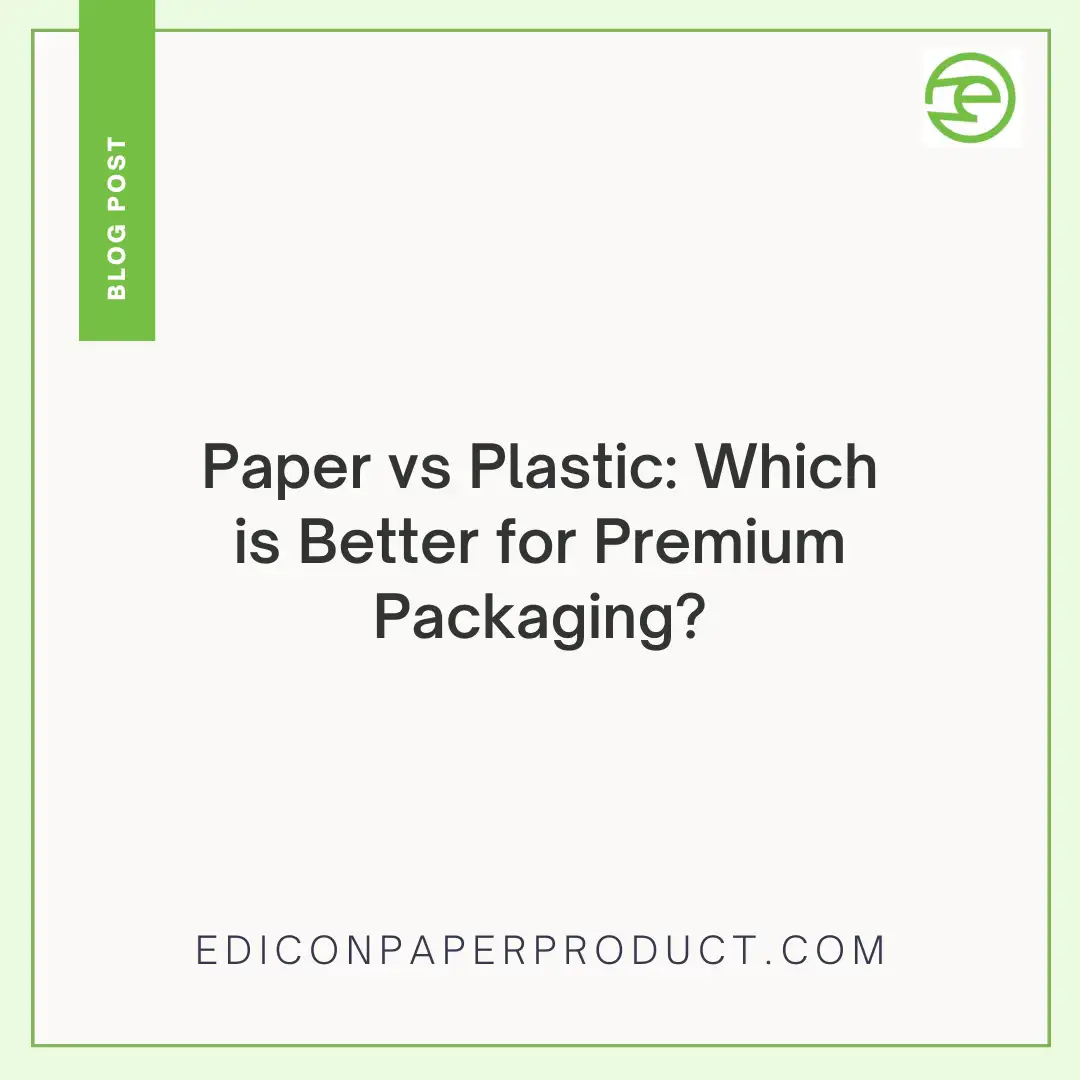Process of Paper Recycling: From Waste to Products
Introduction
Paper recycling from waste to products is a very complex process undertaken to benefit our environment. It involves a series of steps where discarded paper waste is converted into usable products, thereby saving virgin materials and minimizing dumping in landfills.
Understanding how paper moves from being waste material to its recycling into new products portrays the importance of recycling. This information may motivate people and businesses to engage in recycling practices. Such actions not only preserve resources but also make sure that our world becomes a healthier one through the reduction of deforestation and decreasing the amount of energy consumed.
1. Collection of Used Paper
The collection of used paper is the initial process involved in paper recycling. At this stage, the used paper is collected from all sources to ensure a constant supply to the recycling plants.
Sources of Used Paper
• Curbside bins: Many municipalities offer curbside recycling whereby people can easily throw their paper waste into designated bins.
• Schools and offices: Paper products are usually produced in large quantities by learning institutions and working stations. Collection programs in these sites should be promoted to collect the high volumes.
• Drop-off centers: Community drop-off centers would be another collection point. He or she would take the recyclable paper to the center for dumping.
![]()
Methods of Collection and Transportation
After collection, the used paper will need efficient transporting to recycling plants:
• Collection trucks: High-capacity recyclable collection trucks that collect the paper from collection points and transport it to a recycling plant
• Centralized collection centers: In other instances, collected paper is taken to centralized centers before it is forwarded to different recycling plants.
Importance of Proper Collection
Properly collecting recyclables is crucial for the following reasons:
• Paper collection ensures that the supply of recyclables is of good quality
• It reduces contamination. Increased levels of contamination do not support recycling
• Large volumes of recyclables translate to an efficient and sustainable operation.
• Collection is the foundation of effective recycling. It makes the turning of waste paper into new products less painful.
2. Materials Recovery Facility (MRF) Sorting and Cleaning
Paper recycling relies heavily on the Materials Recovery Facility. Sorting and cleaning of used papers are achieved through these facilities, thus making it possible to carry out other recycling processes.
Steps Involved in Sorting and Cleaning Used Paper :
• Pre-Separation: Jumbo items like plastic bag and cardboard will be removed.
• Machine Separation: Modern computers sort paper on size, weight, and other physical characteristics.
• Hand-sorting: Workers will remove non-paper material that the machine did not pull out.
Kind of Materials Removed
Quality recycled paper demands that enough quantities of contaminants are removed.
Some of the contaminants include:
• Tape: Shipping boxes may have tape attached to them as shipping materials. This causes problems during pulping.
• Sticker labels: These will hinder the recovery of the fibers if not removed
• Staples: Staples will puncture machinery easily and thus should be cleaned off
• Plastic residues: Any leftover plastic should not get into the pulps since they can contaminate it, which is against the concept of a good product coming out.
![]()
Advantages of Proper Sorting and Cleaning
• Confirms a clean source of recyclable materials to be used for specific purposes
• This minimizes the levels of contamination which may cause the recycling process.
• Maximize efficiency throughout the whole recycling process, eventually into sustainable practices.
Overall good sorting and cleaning at MRFs provide a sound foundation for successful recycling practices that permit the conversion of waste paper into new products with minimal possible adverse environmental effects.
3. The Pulping Process at Recycling Mills
Introduction to Pulping and Significance in Recycling
The pulping is considered an important process in paper recycling whereby sorted and cleaned paper is transformed into pulp slurry to be used. The pulping breaks down waste paper fibers, which then convert them into usable form for recycled paper products.
Ingredients Used in Pulping
Primarily, additives are water in this case, in which paper is disintegrated into the resultant fibrous components. More additives are allowed to facilitate the process:
• Water: This is the main solvent.
• Additives: Add chemicals, such as sodium hydroxide and hydrogen peroxide, that assist in breaking down the fibers of the paper and remove impurities.
Transformation of Paper to Pulp Slurry
During pulping, the waste paper is mixed with water and additives in very large industrial machines called pulpers. These machines agitate the mixture forcefully enough to break the paper into a thick slurry of individual fibers. This slurry becomes the foundation for creating new recycled paper.
![]()
De-Inking and Bleaching
The ink and other suspensions in the pulp slurry will be removed based on the product resulting from the pulp recycling.
Some of the de-inking processes include:
• Flotation: This involves the introduction of air bubbles in attaching to the ink particles making them float at the surface where they can be skimmed.
• Washing: Water is used to wash off the pulp containing smaller particles of ink and other impurities.
• Bleaching: It is sometimes necessary in order to attain the extent of brightness desired for the recycled paper products. This is through chemical processes by bleaching agents, that include:
I
• Hydrogen Peroxide: These are a few among many commonly used bleaching agents that increase the brightness of the pulp without directly damaging the environment.
• Chlorine Dioxide: These are active agents slightly in demand compared to other agents, because of the 'sensitivity' towards the environment.
These deliver clean pulp to ensure the high-grade recycled paper product.
4. Sheet Formation and Drying Process at Recycling Mills
The cleaned pulp is then sent through sheet formation wherein the pulp is spread on a moving screen such that a continuous mat of fibers is formed. This wet mat is then passed through a series of rollers; excess water is removed and, finally, a uniformly thick sheet is produced.
Drying Techniques Used at Mills
• Air-Drying: Sheets are subject to heated air in large drying chambers, allowing moisture to evaporate gradually.
• Press Drying: This involves squeezing the sheet between heated rollers, thereby forcing the water out through the applied pressure and heat.
• Infrared Drying: This utilizes infrared radiation that penetrates into the sheet while it evaporates the moisture in the paper.
These processes help ensure that the end product meets the proper specifications in terms of dryness and structure to be ready for recycled paper product processing.
5. Recycled Paper Products and Their Uses
Types of Recycled Products
Many of the paper products we employ every day are created from recycled paper:
• Cardboard boxes: Mostly made of recycled paper, they make up the backbone of shipment and storage.
• Newspapers: A lot of their contents are made of recycled fibers to make companies more environmentally friendly in publishing.
• Tissue paper, paper towels, printing paper: Also largely composed of recycled paper product.
![]()
Business and Consumer Benefits of Recycled Products
1. Environmental Advantages
From an environmental point of view, the advantages of recycled paper products include:
• It reduces the demand for new wood pulp, thereby reducing the occurrences of deforestation.
• It prevents waste from landfills, hence reducing the waste sent to landfills and its associated methane.
2. Financial Benefits
In business, there are also financial benefits of using recycled materials. These are outlined as follows:
• Generally, recycled materials are cheaper than new raw materials. Accordingly, the money saved on raw material costs comes with it.
• Green packaging firms can take advantage of enhancing their brand images to attract those conscious customers concerned with the environment.
In a nutshell, the biodegradable paper products we use in our daily life conserve resources, have environmental and monetary advantages, as well as promote the reduction of waste in landfills and responsible business activities.
6. The Environmental Impact of Paper Recycling
Paper recycling saves the environment and protects resources. For every ton, we will save:
• 17 Trees
• 7,000 gallons of water
• 40-64% reduction in energy usage
Water and Energy Consumption Comparison to Fresh Paper Creation
Recycled paper consumes much less amount of water and energy as compared to virgin paper. For example, producing recycled paper takes around 60% less energy, and as much as 70% water is saved in the process. These cost benefits will bring reduction in emission of green gases along with an easy carbon footprint.
1. Comparison Highlights:
A) Water Usage:
• Production of Virgin Paper: High water usage due to the processing of raw wood pulp.
• Recycled Paper Production: Saves water since it only contains existing fibers, thereby requiring less processing.
![]()
B) Energy Consumption:
• Virgin Paper Production: More energy-prone because it extracts and processes the raw materials involved.
• Recycled Paper Production: Uses already existing fibers, saving a lot of energy.
Individuals can supplement organizational efforts by engaging in recycling processes, and organizations can embrace recycling programs that can assist in achieving environmental sustainability as well as curb the over-exploitation of resources. Environmental benefits of paper recycling go beyond tree saving; they involve saving water, lowering energy consumption, and reducing carbon emissions.
7. Future Trends in Paper Recycling
New Developments in Recycling Technology
Technological innovations are going to lead the paper recycling industry forward. The most spectacular developments of which are AI sorting technologies. Paper recycling technology identifies and separates different categories of paper through the use of machine learning algorithms and computer vision methods that are more precise and efficient than traditional classification processes. AI sorting does away with a lengthy process and elevates the accuracy in the overall process; it hugely reduces contamination levels of recycled pulp with improved quality.
Sustainable Practices
Closed-loop systems wherein waste products generated from one part of the recycling process become input for another are soon gaining prominence in many recycling mills. The environmental damage done by this process is being minimized through closed-loop systems. Biodegradable additives are also under research so that chemical agents currently being used for de-inking and bleaching can be replaced, making the recycling process itself not harmful to the environment.
Process of Paper Recycling: Waste to Products
Emerging technologies will transform the way we recycle paper-from waste to new products. For example, pulp techniques could better separate fibers that would then mean higher quality recycled paper. Other breakthroughs, such as the use of enzymes as de-inkers, are being used more and more, replacing chemicals in an environmentally-friendly way.
All these mean a bright future for paper recycling in all parts of the world and staying as part of their sustainable actions.
FAQs (Frequently Asked Questions)
1. What is the significance of paper recycling for the environment?
The paper recycling process plays a crucial role in environmental conservation by reducing the need for virgin materials, thereby saving trees and decreasing landfill waste. It also contributes to resource conservation and minimizes water and energy consumption compared to traditional paper production methods.
2. How is used paper collected for recycling?
Used paper can be collected through various methods such as curbside recycling programs, drop-off centers, schools, and offices. Proper collection is essential for effective recycling as it ensures that the materials reach recycling facilities in good condition.
3. What happens at a Materials Recovery Facility (MRF)?
At a Materials Recovery Facility, used paper undergoes sorting and cleaning. This process involves removing contaminants like tape, labels, and staples to ensure that only clean paper materials are sent for further processing.
4. Can you explain the pulping process in paper recycling?
The pulping process transforms sorted paper into a pulp slurry. This involves mixing the paper with water and additives, followed by de-inking and bleaching to remove ink and impurities. The resulting slurry is then prepared for sheet formation.
5. What types of products are made from recycled paper?
Recycled paper can be transformed into various products including cardboard boxes, newspapers, and eco-friendly packaging. These products offer significant environmental advantages such as reduced deforestation and support sustainable practices.
6. What challenges does the paper recycling industry face today?
The paper recycling industry encounters several challenges including high levels of contamination in collected materials and the declining demand for printed materials due to digital media. These factors can hinder effective recycling efforts and impact overall collection rates.






